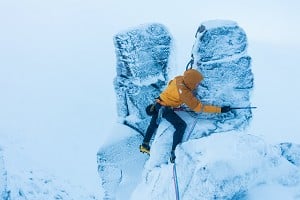
In this review Rob Greenwood and Bridget Glaister take a look at the men's and women's version of Montane's Spine Jacket, having used each throughout the weird and not so wonderful 'winter' that we had this year, which included both three named storms within the space of a single week, and the warmest new year on record.
Having spent several weeks of my life dedicated to dot-watching the Montane Spine Race, I know just how awful conditions can be, so I was intrigued to see where a jacket named after this infamous event was pitched performance-wise. It's an awkward balance to get something that's simultaneously heavyweight enough to keep the rain, snow and wind off day after day, but light enough - and sufficiently breathable - to make it comfy on the go. Thankfully, it's a balance that we'd say Montane have managed to strike.
The Spine Jacket clearly does something a little strange to you, judging by some of the photographs we've taken during the course of writing this review...
In Use
Whilst the Spine Jacket will be a relatively obvious option for the ultra distance running community, who are aware of what 'The Spine' actually is, we would say that its relevance stretches far beyond this. From a hillwalking perspective, it would make for an excellent year-round shell in all but the harshest conditions (i.e. Scottish winter). From a scrambler/climber/mountaineer's perspective the fit is absolutley fantastic, with excellent freedom of movement, but you'd realistically be after something a little burlier, as the 13 denier face fabric isn't designed with that sort of rough use in mind.
Here are some of our own experiences:
Rob: It's been an interesting winter to test the Spine Jacket, as it really has thrown everything at us. I've used the jacket in freezing conditions, windy conditions, and even - at times - pretty warm conditions, and what has struck me time and time again is the fact that throughout all this varied weather it's a jacket you can leave on and largely forget about. Usually I'm a big fan of lightweight windproofs, as they've historically fulfilled this role, being much more breathable than the equivalent waterproof; however, thanks to the relatively light weight of the Spine, coupled with the fact that GORE Active really is something of a revelation in terms of its breathability, I've often found myself ditching the windproof in favour of carrying this instead.
Bridget: Recent training for the Dragon's Back has demanded higher mileage in the bigger outdoors such as Snowdonia, the Clwydian Hills and the Peak District. During the February storms I spent hours running in the Peak District and Clwydian Hills with it zipped up, hood up and cinched in tight, and managed to stay dry. More recently I've been back in the Snowdonia mountains and chose to wear it throughout the run as a windproof, as much as a waterproof, because the fabric is so breathable it remained comfortable. Carrying it on the odd occasion was not a problem as it is so lightweight.
Weight
The Spine Jacket is indeed an exceptionally light shell of its type. Whilst lighter jackets are available, such as the Podium Jacket we reviewed a couple of years ago, none will offer anywhere near as much weather protection as this. In fact, when it comes to waterproofing/breathability we'd be impressed if you found anything as good that came in under this weight, shy of a smock, which wouldn't have the same level of usability (much though I love a smock, they're undeniably specialist, and a bit of a pain at times).
Men's Medium: 250g
Women's Size 10: 210g
n.b. both weights were taken on our scales, as opposed to the brand's official reading
Membrane/Fabric
Rob: The Spine Jacket features as a key ingredient a three-layer GORE Active membrane. Gore-Tex is still without doubt the gold standard for waterproofing, and while Gore's reticence to publish lab data makes definitive comments on breathability performance difficult, we do know that Gore-Tex Active sits at the most breathable end of their fabric range. I'd wondered about the impact this might have on its ability to shed water, but having used it in a variety of seriously wet days it's fared impressively well. Granted, there's always that blurry line, because after hour upon hour of high intensity activity in wet conditions it's inevitable that some moisture will get in and also that through perspiration some will want to get out, which can leave you damp - but show me the waterproof that doesn't do this in extreme conditions!
I've certainly been impressed by the Spine Jacket's breathability, so much so that I've occasionally donned it as a windproof in more marginal conditions, using the clip around the zip to aid venting. On longer runs in more marginal conditions this has meant a bit of a weight and efficiency saving, as it means you can carry a single jacket that you wear throughout, as opposed to having to switch between a windproof and a waterproof (in addition to the extra weight of carrying both).
When it comes to durability, The Spine features a 13 denier face fabric, which is seriously, seriously light. Whist this lightweight fabric undoubtedly aids breathability and provides the jacket with its lovely soft, silent feel, it does make it vulnerable to nicks and tears. You can't have everything. Much like the zipper, this is something that's best to be aware of, because if you did decide to use it in the wrong setting it'd likely wear out quite quickly. Avoid scrambling, mountaineering, or anything vaguely rocky. For running this is less of an issue, although runners - including myself - often blur the lines. In short, just be careful with it and it'll be fine, but if you risk it be prepared to start wielding sticky tape and/or seamgrip.
Bridget: Just the name of the jacket evokes the idea of it being used in the worst of British winter weather and I have not been disappointed. The quality of both the fabric and the membrane remains unquestionably waterproof (something I've tested on some truly awful days out), plus no water has trickled back up the sleeves. I have been surprised how well it fares compared to my other thicker winter jackets in the worst of the wind chill, which means it would suit all seasons.
Fit
Men's (Rob):
The other thing that's suprised me about the Spine Jacket is its fit, which is a little snugger than I was expecting, although not necessarily in a bad way. If you were actually doing the Spine Race, or just expecting to use it a lot throughout the winter months with additional layers on underneath, it would defintely be worth going up a size. As things were, I stuck with my standard Medium, which has certainly worked for me as I've got nothing quite that cold or miserable in the diary! The jacket comes in both men's and women's fit.
Considering the cut is quite slimline it offers a remarkable freedom of movement, with plenty of mobility around the arms and shoulders, and - on me at least - without a single inch of hem lift when the arms are raised (which is an impressive feat). The cuffs are elasticated, so they don't feature any adjustment. For our purposes they don't really need to, and I've appreciated the simplicity. The hem features an elasticated drawcord on each side and the hood has something similar, with elastication around the back to keep it snug against your head (with or without a hat). It's also great that Montane haven't scrimped on putting in a proper wired peak, because as we all know - when the wind is blowing and the rain is falling hard, nothing else works!
Women's (Bridget):
I chose my usual size and whilst the jacket is a slim fit, the sizing is perfect when worn with a few layers of technical clothes underneath. The cinches to the bottom make it snug there when it is particularly cold.
I really like the hood, the no fuss elastic at the back is ample, the cords at the front are easy to work with gloves on, the peak does its job in the driving rain. It fits snugly to the face so that you don't loose vision as you look around and as I found out in February, as the wind sounds like a steam train outside, the hood will nicely deaden the sound.
I doubted that I would use the press-stud chest closure but I have and it works well to keep the jacket sitting nicely as you vent. Another simple idea that shows the knowledge behind the design.
Features
Rob: One area of possible vulnerability in the Spine Jacket centres around its pockets, as Montane have opted for a mesh, as opposed to a waterproof lining. This means that if you do accidentally leave your pockets open, or simply have your hands in your pockets, then you've left open a route for water ingress. Whilst I cite this as a vulnerability, it isn't - through my various wet days out - something I've been at the brunt of, as I've always been careful to do the zippers up properly (and I tend not to run with my hands in my pockets). Obviously this lining makes for a slightly lighter and marginally more breathable jacket (versus having a second layer of waterproof fabric), so there are pros as well as cons.
Bridget: Special mention to the hood that fits so well, so it is often used for comfort when it's windy, rather than stopping to put a hat on. Generally I am all for a no fuss approach with elasticated cuffs, but the only nag I have about this jacket is that the cuffs are too tight fitting for me to access my sports watch easily. Either I have to run with my wrist exposed and getting chilly compared to my other side, or I carefully slide a finger under the cuff and wiggle it over to move it over and back. The problem gets worse when wearing thicker insulated gloves. On my longer runs as I am getting tired it has been a bit distracting.
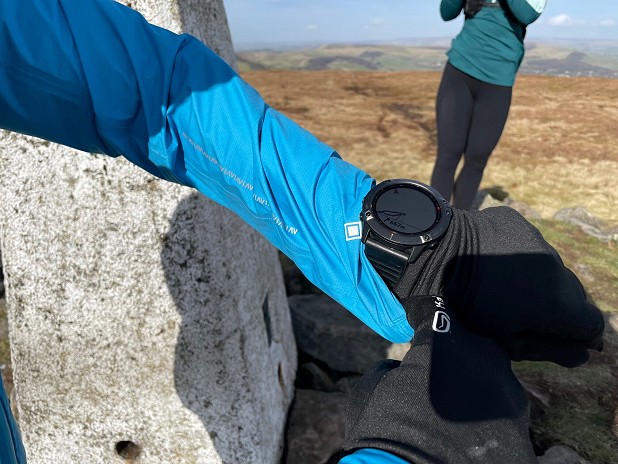
Summary
It's hard to find major fault within the Spine Jacket: it's lightweight, impressively breathable, and supremely waterproof - even in the worst of weathers. The cut in both the men's and the women's is fantastic, with superb freedom of movement, although watch out for those tight cuffs on the women's if you're used to wearing a large watch. When it comes to durability, it is undoubtedly a light weight jacket and its 13 denier face fabric isn't designed with sharp rocks in mind, so be warned if you're on more technical ground. That said, we've found it to cope well with extreme use, although perhaps this isn't all that surprising given its namesake is one of the most taxing races in the world!






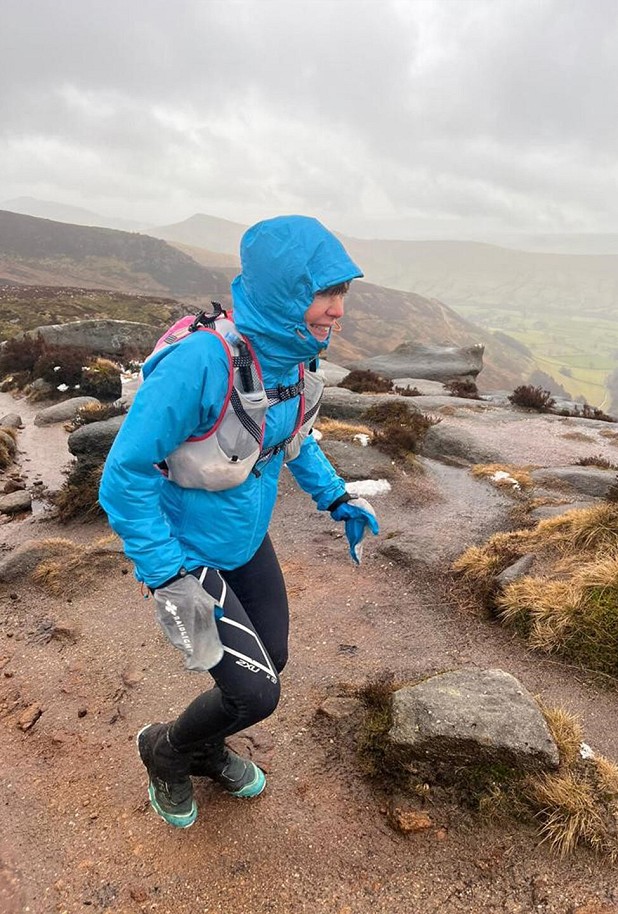
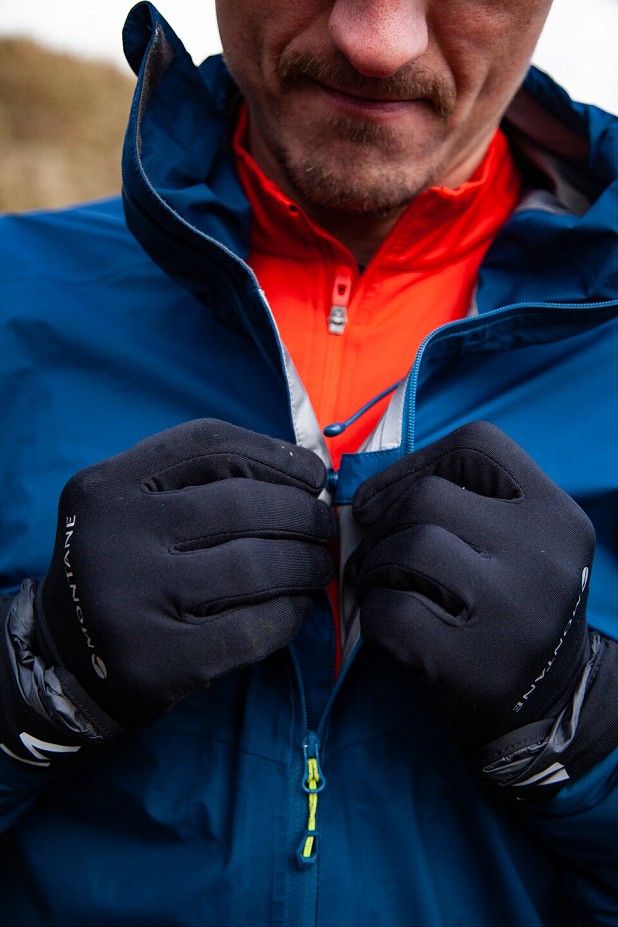


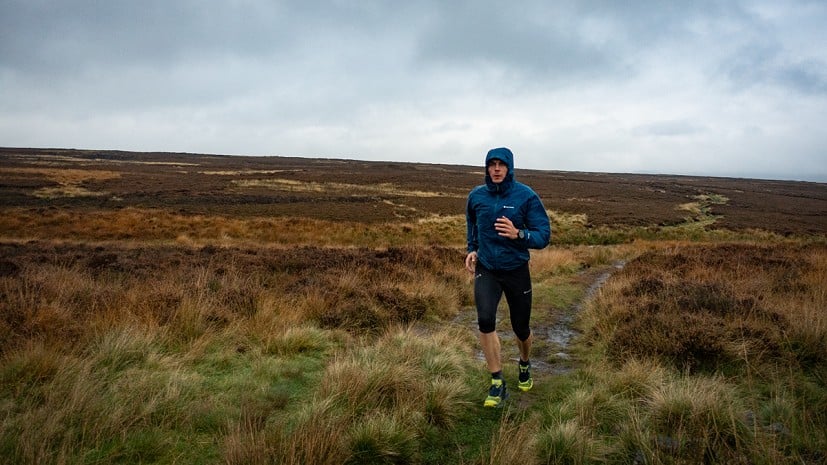

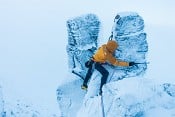




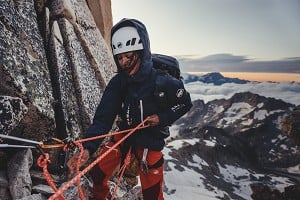
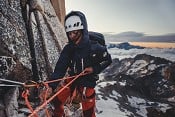
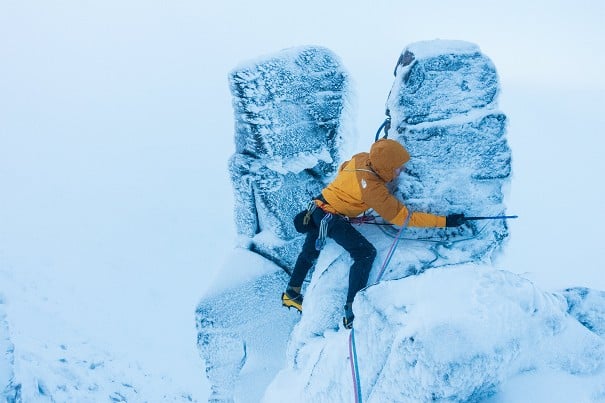


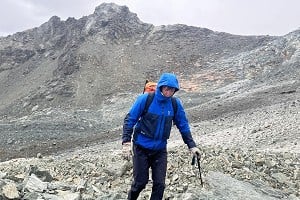
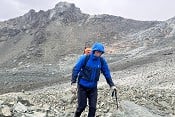


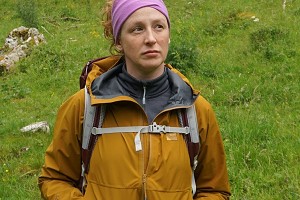





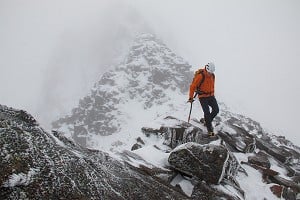

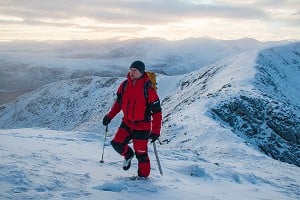
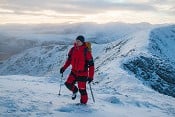
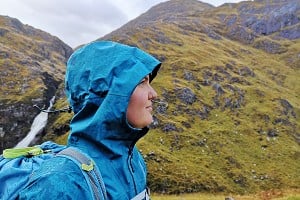
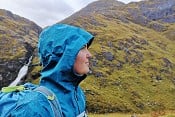









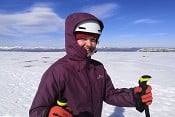


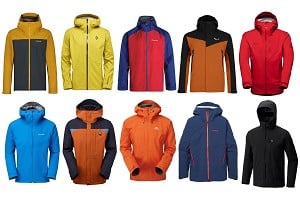
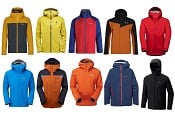
Comments
Slightly off its main intended use, but you did touch on it in the review :) For hillwalking, I've always wondered how the durability trade offs work vs 2.5 layer jackets of a similar weight? The 2.5 layer jackets definitely have rather thicker face fabrics (20-30 denier), but obviously lack the proper liner. Especially non obvious given how often they'll be being carried vs worn. Do 3 layer things cope much better over time with being rolled up and carried about? Can't remember ever tearing a waterproof jacket, trousers yes but there's obviously much more rucksack abrasion than when running too.
Looking to replace my 'warm' running jacket soon (Hagloft Gram comp II, picked up half price in a sale) as it's 6+ years old now and starting to delam. Still useful for lower hills and moderate weather but looking for something newer for more commiting weather. This is the kind of jacket I'd be looking at to replace it. A few extra queries (if you have the answers):
- How has the DWR/beading held up over time?
- How does the material deal with having a rucksack over the top of it over time.
- is there enough room at the back to wear it over a 3L bumbag.
- same question as Qwertilot - how does it deal with being scrunched up in bags (obviously when not in use I'd try and keep it hung up wherever possible) and how small does it pack up?
- What colour does it come in ;)
cheers, Nic
Rob's away this week but I'm sure he'll respond to these when he's back. He has been raving about this jacket for months now though!
Nick
Hi Nic,
Sorry for the delayed reply. Rather topically, I was up in the North Pennines recceying a load of the Pennine Way, ahead of the Summer Spine later this year.
Tangents aside, here's the answers to your various questions:
- How has the DWR/beading held up over time?
Like almost every jacket these days, it doesn't stand up as long as they used to, as a result of the progressive reduction of PFCs used throughout the fabric and materials, that previously allowed them to bead for a lot longer. As such, you're going to have to wash/re-proof it relatively regularly - especially if you're putting it through frequent use.
- How does the material deal with having a rucksack over the top of it over time.
I haven't found this to be a problem, and have been using it a lot over a 6+ month time frame; however, this is - at least in terms of the jackets overall lifespan - a relatively short amount of time and the wear you'd expect to experience with this is quite progressive, occurring quite slowly over time. Thus far though, after a lot of use, it's not showing any signs of wear, which is impressive given the relatively minimalist face fabric used.
- is there enough room at the back to wear it over a 3L bumbag.
The cut on the Spine Jacket is pretty slimline and having just tried this with my fairly fitted medium, my 3L bumbag definitely doesn't fit underneath. There'd be the potential to size-up, but even then I can't see there being enough volume around the back. On the flipside, I have managed to fit it on over a minimalist running vest, although it was pretty snug, and realistically I'd just try to get it on underneath if I could (however it would work in an emergency).
- same question as Qwertilot - how does it deal with being scrunched up in bags (obviously when not in use I'd try and keep it hung up wherever possible) and how small does it pack up?
It doesn't pack as small as some of the superlight/minimalist models that are out there, but then again - you wouldn't expect it to. That said, for a fully fledged three layer GORE jacket it packs down impressively small. I've attached some pics below, next to a softflask bottle, for context (I could probably have packed it smaller, but it's easier to do that whilst stuffing it into wherever it's going to be packed, but then you wouldn't have been able to see it).
As far as repeated stuffing/scrunching is concerned, it seems to handle it very well on account of its 13 denier face fabric being fantastically soft. It's a very different experience packing an 80 denier GORE PRO jacket, that's for sure!!
- What colour does it come in
It's available in the blue colour I've got on review here, and a much brighter/bolder red.
This is an interesting question, albeit one which is incredibly difficult to answer, as I suspect it's a case of six of one and half a dozen of another. Whilst you may get a more durable outer with the 2.5 layer jacket, I'm never quite so convinced by the durability - or breathability* - of the inner.
* even with the print, they tend to feel a lot clammier than the textured scrim used within a 3 layer jacket
My take is that 3 layer jackets are likely to be more durable, because the membrane is protected between that inner and outer fabric, as opposed to exposed like they are within a 2 or 2.5 layer jacket. In terms of tearing jackets, I've torn plenty, although most of these have been whilst climbing, I've torn some whilst scrambling, so I guess it depends on the exact nature of what hillwalking entails for you.
Aware that's a little nebulous an answer, but hopefully it's along the lines of your own musings. Like I said within my opening line - it's a very difficult question to give a precise answer to, but that's my hunch.